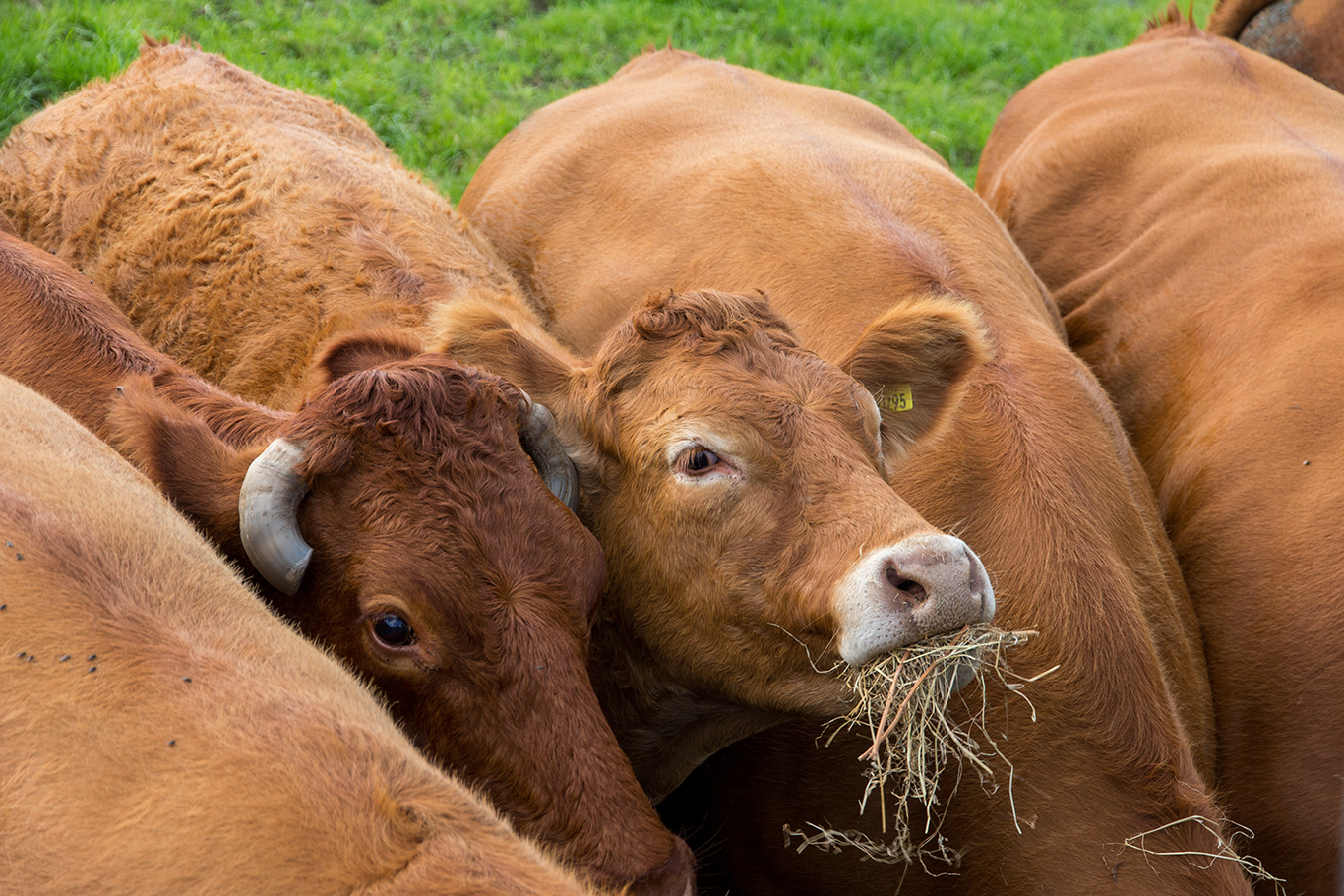
Top 3 Recommended Policies

Farm and ranch insurance is a specialized type of coverage designed to protect the unique needs of agricultural operations. Whether it’s a small family farm or a large ranch, this insurance plays a crucial role in safeguarding assets, ensuring business continuity, and providing peace of mind. Understanding the various components of farm and ranch insurance is essential for anyone involved in agriculture
What is Farm and Ranch Insurance?
Farm and ranch insurance is a comprehensive policy that combines various types of coverage tailored to the agricultural sector. Unlike standard homeowners' insurance, which may not cover specific risks associated with farming, farm and ranch insurance addresses the unique challenges faced by farmers and ranchers. This specialized insurance not only protects physical assets but also provides peace of mind, allowing operators to focus on their agricultural practices without the looming worry of unforeseen disasters.
Types of Coverage
Farm and ranch insurance typically includes several types of coverage. These can range from property insurance, which protects buildings and equipment, to liability insurance, which safeguards against claims arising from accidents on the property. Some policies may also offer coverage for livestock, crops, and machinery, ensuring that all aspects of the operation are protected. Additionally, many policies include coverage for business interruption, which can be crucial if a natural disaster or other event temporarily halts production. This ensures that farmers and ranchers can maintain their livelihoods even in the face of adversity.
Importance of Customization
Every farm or ranch is different, which means that insurance needs can vary significantly. Customizing a policy to fit specific requirements is crucial. Factors such as the type of farming, location, and size of the operation all play a role in determining the necessary coverage. Working with an insurance agent who specializes in agricultural policies can help in tailoring a plan that meets individual needs. Moreover, understanding the local climate and common risks in the area—such as floods, droughts, or wildfires—can further refine coverage options, ensuring that farmers and ranchers are adequately protected against the most pertinent threats to their operations.
In addition to traditional coverage options, many farm and ranch insurance policies now offer endorsements and additional features that can enhance protection. For instance, some policies may include coverage for organic farming practices, which can be essential for those transitioning to or maintaining organic certification. Furthermore, as technology advances, policies may also cover modern farming equipment and smart technology systems that are increasingly being integrated into agricultural operations. This adaptability not only reflects the evolving nature of farming but also ensures that policyholders are equipped to handle the complexities of modern agriculture.

Key Components of Farm and Ranch Insurance
Understanding the key components of farm and ranch insurance can help in making informed decisions. Each component addresses specific risks and provides essential protection to farmers and ranchers.
Property Insurance
Property insurance is one of the foundational elements of farm and ranch insurance. It covers physical assets such as barns, silos, and equipment from risks like fire, theft, and natural disasters. This type of coverage ensures that in the event of a loss, farmers can recover and continue their operations without significant financial setbacks. Additionally, property insurance may also extend to cover personal property used in the farming operation, such as tools and machinery, which are vital for day-to-day activities. Farmers should carefully assess the value of their assets and consider additional endorsements to their policy that may cover specialized equipment or structures unique to their operations.
Liability Insurance
Liability insurance is crucial for protecting against claims made by third parties. This includes coverage for injuries that may occur on the property or damages caused by farm operations. For instance, if a visitor is injured while on the farm, liability insurance can cover legal costs and settlements, safeguarding the farmer's financial interests. Furthermore, liability insurance can also encompass product liability, which is particularly important for those who sell goods directly to consumers. If a product causes harm or illness, this coverage can help mitigate the financial repercussions of lawsuits, ensuring that farmers can focus on their operations without the looming threat of legal action.
Crops and Livestock Insurance
Crops and livestock are often the lifeblood of a farming operation. Specialized insurance policies can protect against losses due to adverse weather conditions, disease outbreaks, or market fluctuations. Crop insurance, for example, can help farmers recover from losses due to drought or flooding, while livestock insurance can cover the unexpected death of animals. In addition to these protections, farmers may also consider revenue protection policies that safeguard against declines in market prices, ensuring that they can maintain a stable income even in volatile markets. This comprehensive approach to insuring crops and livestock not only provides peace of mind but also supports the long-term sustainability of farming operations in an ever-changing agricultural landscape.
Factors Influencing Insurance Costs
The cost of farm and ranch insurance can vary widely based on several factors. Understanding these factors can help farmers and ranchers budget effectively and seek the best coverage at a reasonable price.
Type of Farming or Ranching
The type of agricultural operation significantly influences insurance costs. For example, a dairy farm may face different risks compared to a grain farm, leading to variations in premiums. Additionally, operations that involve higher-value equipment or livestock may incur higher insurance costs due to the increased risk of loss. Specialty farms, such as organic or aquaculture operations, may also encounter unique risks that necessitate tailored insurance solutions, potentially affecting their overall costs. Furthermore, the scale of the operation, whether it is a small family-run farm or a large commercial enterprise, can also dictate the complexity and cost of the insurance needed.
Location
The geographical location of a farm or ranch also plays a crucial role in determining insurance costs. Areas prone to natural disasters, such as floods or hurricanes, may see higher premiums due to the increased risk of damage. Conversely, farms in regions with a lower risk of such events may benefit from reduced rates. Additionally, local regulations and the density of agricultural operations in the area can influence insurance availability and pricing. For instance, farms located in regions with a high concentration of similar operations might face increased competition for resources, impacting their insurance rates as providers adjust their offerings based on localized risk assessments.
Claims History
A farmer's or rancher's claims history can impact future insurance costs. A history of frequent claims may signal higher risk to insurers, resulting in increased premiums. Conversely, a clean claims history can lead to discounts and lower rates, as insurers view the operation as less risky. Moreover, the nature of past claims matters; for example, claims related to theft may be treated differently than those associated with natural disasters. Insurers often analyze the types of claims filed to assess risk more accurately, which can lead to tailored policies that reflect the specific needs and experiences of the insured. This nuanced understanding can help farmers and ranchers make informed decisions about risk management and insurance coverage, ultimately influencing their financial stability and operational success.
Common Exclusions in Farm and Ranch Insurance
While farm and ranch insurance offers extensive coverage, it’s essential to be aware of common exclusions that may apply. Understanding these exclusions can help farmers and ranchers make informed decisions about additional coverage options. Being proactive in recognizing these gaps in coverage can ultimately save significant financial resources and ensure that operations remain sustainable in the face of unforeseen challenges.
Natural Disasters
Many standard farm and ranch insurance policies may exclude coverage for certain natural disasters, such as earthquakes or floods. Farmers in high-risk areas may need to purchase additional coverage or separate policies to protect against these specific risks. For instance, in regions prone to flooding, such as those near rivers or coastal areas, obtaining flood insurance becomes crucial. Additionally, understanding the local climate and historical weather patterns can help farmers assess their risk levels and choose the appropriate coverage to safeguard their investments.
Equipment Breakdown
Equipment breakdown is another common exclusion. While property insurance may cover damage to equipment, it may not cover breakdowns due to mechanical failure. Farmers may want to consider equipment breakdown insurance to protect against costly repairs and losses due to equipment failures. This type of insurance can be particularly beneficial for operations that rely heavily on machinery, such as large-scale crop production or livestock management. Furthermore, regular maintenance and inspections can mitigate the risk of breakdowns, but having the right insurance in place provides peace of mind and financial security in case of unexpected failures.
Intentional Acts
Insurance policies typically do not cover losses resulting from intentional acts or illegal activities. This means that if a farmer or rancher engages in behavior that leads to a loss, such as committing fraud or neglecting safety protocols, they may not be able to file a claim for damages. It’s important for farmers to adhere to ethical practices and maintain compliance with regulations to avoid jeopardizing their coverage. Additionally, understanding the nuances of policy language can help ensure that farmers are not inadvertently voiding their coverage through unintentional actions or misunderstandings regarding their responsibilities under the policy.
How to Choose the Right Farm and Ranch Insurance
Selecting the right insurance policy can be a daunting task, but with careful consideration and research, farmers and ranchers can find a plan that meets their needs. Here are some key steps to guide the selection process.
Assess Your Needs
The first step in choosing the right farm and ranch insurance is to assess specific needs. This includes evaluating the types of crops or livestock, the size of the operation, and any unique risks associated with the location. Understanding these factors will help in determining the necessary coverage levels. For instance, a dairy farm may face different risks compared to a grain farm, such as equipment breakdown or livestock disease, which necessitates tailored coverage options. Additionally, consider seasonal variations and how they might impact your operation, as certain times of the year may pose heightened risks due to weather conditions or market fluctuations.
Consult with Experts
Consulting with insurance agents who specialize in agricultural policies can provide valuable insights. These professionals can help identify potential risks, recommend suitable coverage options, and assist in customizing a policy that fits the operation's specific needs. Moreover, they can offer guidance on the latest industry trends and changes in regulations that may affect your insurance requirements. Engaging with local agricultural organizations or attending workshops can also enhance your understanding of the insurance landscape, allowing you to make more informed decisions about your coverage.
Compare Policies
Once potential policies have been identified, it’s essential to compare them. Look at coverage limits, exclusions, premiums, and deductibles. A thorough comparison will help in finding the best value for the coverage needed, ensuring that the operation is adequately protected without overspending. Additionally, consider the insurer's reputation for customer service and claims handling, as these factors can significantly impact your experience during a claim. Reading reviews and seeking feedback from fellow farmers can provide insights into how well an insurance company supports its clients when they need it most. It may also be beneficial to inquire about discounts for bundling policies or implementing risk management practices, which can further enhance the affordability of your coverage.
The Role of Risk Management in Agriculture
Risk management is an integral part of running a successful farm or ranch. By identifying potential risks and implementing strategies to mitigate them, farmers can minimize losses and protect their investments.
Identifying Risks
Identifying risks is the first step in effective risk management. This includes assessing environmental risks, market fluctuations, and operational hazards. By understanding the specific risks associated with their operation, farmers can take proactive steps to mitigate potential losses.
Implementing Safety Protocols
Implementing safety protocols can significantly reduce the likelihood of accidents and injuries on the farm. This includes training employees on safe practices, maintaining equipment, and ensuring compliance with safety regulations. A safer operation not only protects workers but can also lead to lower insurance premiums.
Diversifying Operations
Diversifying agricultural operations can also serve as a risk management strategy. By growing different crops or raising various types of livestock, farmers can reduce the impact of market fluctuations or crop failures. This diversification can lead to more stable income and a lower risk profile for insurance purposes.

Claims Process for Farm and Ranch Insurance
Understanding the claims process is vital for ensuring a smooth experience when filing a claim. Being prepared can help farmers and ranchers navigate the process effectively and receive the compensation they need.
Reporting a Claim
The first step in the claims process is reporting the claim to the insurance company. This typically involves providing details about the incident, including the date, time, and nature of the loss. It’s essential to report claims promptly, as delays can complicate the process.
Documentation
Documentation is critical when filing a claim. Farmers should gather evidence of the loss, including photographs, receipts, and witness statements. This documentation helps substantiate the claim and can expedite the claims process.
Working with Adjusters
After a claim is reported, an insurance adjuster will typically be assigned to evaluate the claim. This may involve visiting the site of the loss and assessing the damage. Farmers should be prepared to provide any additional information requested by the adjuster to facilitate the process.
Conclusion
Farm and ranch insurance is a vital component of managing agricultural operations. By understanding the various types of coverage, factors influencing costs, and the claims process, farmers and ranchers can make informed decisions that protect their investments. With the right insurance in place, agricultural operations can thrive, even in the face of unexpected challenges.
As the agricultural landscape continues to evolve, staying informed about insurance options and risk management strategies is essential. By prioritizing protection and planning for the future, farmers and ranchers can ensure the sustainability of their operations for generations to come.
Contact Us

